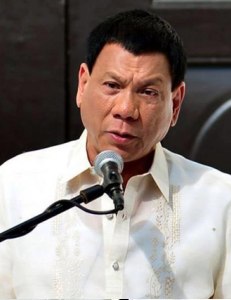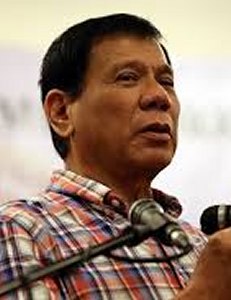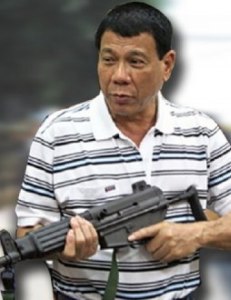History 3
Modern Times
From yesterday to today
The now over 70 years since World War II have been and still are a turbulent time. Lead a country with over 7000 islands, 92 official languages and different cultural influencies is a tough task.
Folks up in the Batanes islands are very different from the sultanates in the southern Sulu sea. The national government in Manila struggles with similar problems as the European Union's government in Brussels.
Manila the former Pearl of the Orient became a hustling megacity. Transportation became and is still becoming a national network on land, on sea and in the air.
Tourism industry is seriously competing with fishery and mining industry. Population grew from 18.786 Million in 1948 to 103.280 Million at this moment (March 3, 2017).
To give this rather long third section a structure, we have decided to divide it by precidencies. We also could have chosen typhoons. But presidents occurred a bit less frequently.
The tables contain cultural, natural, social and political events. Key events are in red color.
3 - From 1946 by presidents
Manuel Roxas
| Date | Year | Cultural, natural, social and political events |
|---|---|---|
| May 28 | 1946 | Manuel Roxas becomes president of the third Philippine Republic (Commonwealth status). However, the government finds little popularity among the population. The black market and the corruption flourish with the general poverty of the population. |
| July 4 | 1946 | The US officially declares the Philippines as independent under President Truman. The country remains, however, in a strong economic and political dependence on America. The US retains the right to maintain military bases in the archipelago, securing economic benefits through export restrictions for Philippine goods and freedom from customs duties for American goods (Bell Trade Act). The Bell Trade Act strongly restricts the industrialization of the country. The Philippines will receive a war indemnity of 620 million dollars, in return, the Americans will have extensive rights in the exploitation of mineral resources. |
| September 9 | 1946 | An amendment to the "Amended Tenancy Act" favors the feudal landowner oligarchy and fosters the unrest among peasants and workers.
The Hukbalahap (HUK), which still possesses weapons from the Second World War and was not recognized by the Americans for its resistance work, finds a great influx among the peasant population with its radical ground-reform concept and its struggle against the exploiters of large estates. The fighting zone of the rebellious HUK's expands next to Central Luzon to the provinces of Bataan and Zambales. |
| January 28 | 1947 | President Roxas announced an amnesty against war collaborators. The following representatives of the old Machtelites are released from the detention: José Claro M. Recto (ex-foreign minister), Benigno Ramos (leader of a militant projapan youth organization), Jose Vargas (Philippine ambassador in Japan) and Benigno Aquino Sr. (ex-government member and father of the later murdered Benigno Aquino jr.). |
| March 6 | 1947 | President Roxas explains the rural HUK movement as a communist-colored movement for illegal. It is accused of the rebellion and the attempted state overthrow.
Jose and Jesus Lava are trying to integrate the individual trade unions. However, the trade unions remain fragmented to the present day. |
| April 15 | 1948 | President Roxas dies of a heart attack. Vice-President Elpidio Quirino followed suit. He wants to solve the most urgent problems of the country and starts negotiations with the HUK rebels in Central Luzon. In return, he promises an amnesty. Both sides, however, have strong reservations against each other. |
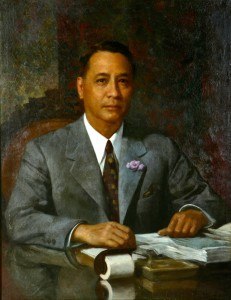
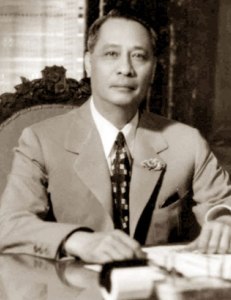
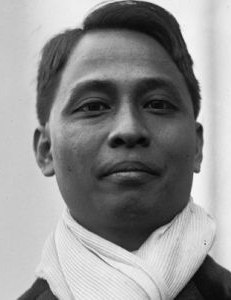
Elpidio Quirino
| Date | Year | Cultural, natural, social and political events |
|---|---|---|
| May 28 | 1946 | Elpidio Quirino is elected president |
| August 15 | 1947 | The approximately 30,000 members of the HUK movement are renamed "Hukbong Mapagpalaya ng Bayan (Movement of the Liberation Army) and erected six regional commands. She is badly armed. In the Chinese socialist revolution it is a model. |
| Septembr 8 | 1947 | A peace treaty with Japan, including Japan's reparations, is concluded. |
| - | 1949 | Election of Ferdinand E. Marcos to the Philippine Parliament. Even now, he praises his "heroic deeds" in the Second World War, but they do not withstand a review. |
| August 31 | 1950 | Ramon Magsaysay is appointed by President Quirino as Minister of Defense. He enjoys the appreciation of the American government and also takes paramilitary and psychological help from the American CIA under the direction of Edward Landsdale in the suppression of uprisings. In fact, the HUK movement loses ground and supports the rural population.
By 1950, the US is supporting the Philippine military with equipment worth US $ 200 million. |
| October 21 | 1950 | The "Writ of habeas corpus" fundamental rights are partly abolished in order to allow a faster and longer detention of leaders of the communist movement. |
| August | 1951 | The National Movement for Free Election (NAMFREL) is established with the financial support of the CIA. |

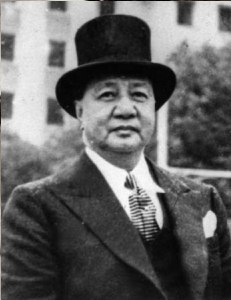
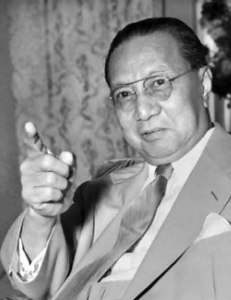
Ramón Magsaysay Sr.
| Date | Year | Cultural, natural, social and political events |
|---|---|---|
| November 10 | 1953 | Ramon Magsaysay wins the presidential election with the massive support of the CIA before the current Quirino. The popular politician is campaigning for social reforms, but here he meets the resistance of the landowner's caste and wants to improve the country's infrastructure. |
| - | 1954 | President Magsaysay signed the "Agricultural Tenancy Act". The land reform is intended to strengthen the position of the farmers as land tenants and to limit arbitrary contract restraints. The economic situation of the rural population is improving. |
| May 16 | 1954 | The Huk leader, Luis Taruc, surrenders to the government and is sentenced to 12 years imprisonment. The Huk movement loses political power, only a small group under Jesus Lava, later chairman of the (Stalinist-oriented) Communist Party (CPP), continues the struggle greatly weakened. |
| July 21 | 1954 | The "Southeast Asian Treaty Organization" (SEATO) is established in Manila. The main goal is the containment of communist expansion in Southeast Asia. In addition to the Philippines and Thailand, the signatory states are the USA, UK, France, Australia, Pakistan and New Zealand. |
| December 15 | 1954 | The "Laurel-Langley Agreement" is signed between the Philippines and the USA. This agreement opens the Philippine market for American companies. |
| - | 1955 | The "Land Reform Act" provides that private land can be expropriated by the state if an individual has more than 300 hectares, a company has more than 600 hectares. |
| March 17 | 1957 | President Magsaysay dies in a plane crash in Cebu. Vice-President Garcia takes office. |
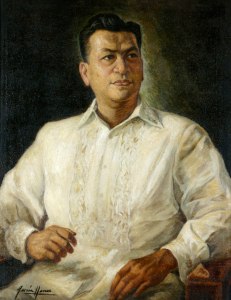
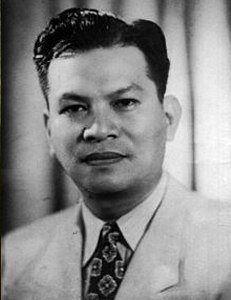
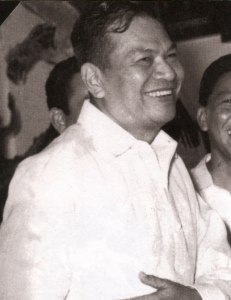
Carlos P. Gracia
| Date | Year | Cultural, natural, social and political events |
|---|---|---|
| June 20 | 1957 | Prohibition of the Communist Party of the Philippines. Active membership could be attributed to the death penalty. |
| November 14 | 1957 | Carlos P. Gracia is the winner of the presidential election. He is trying to continue the policy of President Magsaysay. |
| - | - | President Garcia exercised the Filipino First Policy, for which he was known. |
| March 3 | 1960 | President Carcia affirmed the need for complete economic freedom and added that the government no longer would tolerate the dominance of foreign interests (especially American) in the national economy. |
| - | - | During his administration, President Carcia acted on the Bohlen-Serrano Agreement, which shortened the lease of the American Bases from 99 years to 25 years and made it renewable after every five years |
| November | 1961 | At the end of his second term, he ran for re-election in the Presidential elections, but was defeated by his Vice-President Diosdado Macapagal, who belonged to the opposing Liberal Party |
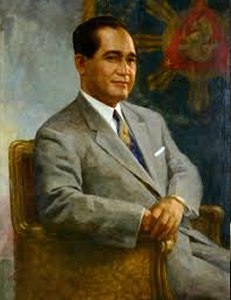
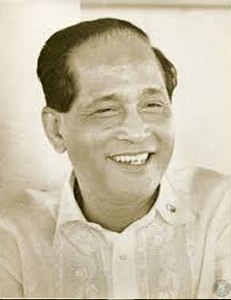
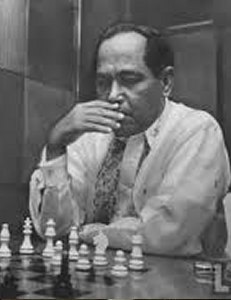
Diosdado Macapagal
| Date | Year | Cultural, natural, social and political events |
|---|---|---|
| December 30 | 1961 | Diosdado Macapagal replaces President Garcia in office. His government program, "New Era", aims to morally renew the Philippine society, combat corruption, increase agricultural productivity and create more social justice. It is a target catalog, which will always be repeated by the following presidents, irrespective of their liberal or national party orientation.
In fact, the economic situation worsens with rising inflation and unemployment. Foreign debt is also growing rapidly. Its position of power is weakened by internal quarrels and quarrels. |
| January 21 | 1962 | Hardly any import restrictions and free exchange rate of the peso. Locally manufactured products get under price pressure. |
| - | 1962 | The territory of eastern North Borneo (now Sabah), and the full sovereignty, title and dominion over the territory were ceded by heirs of the Sultanate of Sulu, HM Sultan Muhammad Esmail E. Kiram I, to the Republic of the Philippines.
The Philippines broke diplomatic relations with Malaysia after the federation had included Sabah in 1963. |
| jULY | 1963 | President Macapagal convened a summit meeting in Manila in which a nonpolitical confederation for Malaysia, the Philippines, and Indonesia, Maphilindo, was proposed as a realization of José Rizal's dream of bringing together the Malay peoples, seen as artificially divided by colonial frontiers.
The subsequent development of ASEAN almost certainly excludes any possibility of the project ever being revived. |
| - | 1964 | Before the end of his term, President Macapagal persuaded Congress to send troops to South Vietnam. However this proposal was blocked by the opposition led by Senate President Ferdinand Marcos |
| November | 1965 | Macapagal was defeated by Marcos in the November 1965 polls. |
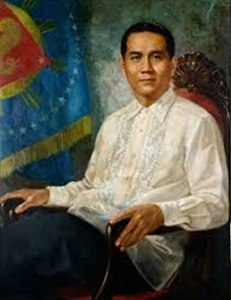
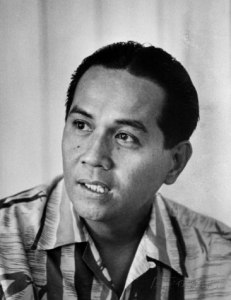
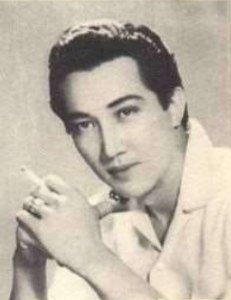
Ferdinand Marcos
| Date | Year | Cultural, natural, social and political events |
|---|---|---|
| November 9 | 1965 | Presidential elections - Ferdinand Marcos, who had previously switched from the Liberal Party to the Nacionalista Party, received a far more votes than the former Macapagal, with a 75% vote. This election also speaks of electoral fraud. |
| December 30 | 1965 | Ferdinand Marcos is introduced as president. He is the sixth president of the Third Republic of the Philippines. He takes over the country in many crises and concentrates on the expansion of the country's infrastructure in the following years. In this context, he successfully implements successful employment programs. With the awarding of projects he creates a circle of minions. The promised agricultural reform remains a first step. |
| August 16 | 1967 | Four days lasting eruptions of Taal Volcamo |
| - | 1967 | Growing religious and political separatism in the Muslim-influenced parts of Mindanao creates a very strong potential for conflict in the coming decades. It is also caused by the immigration waves of impoverished peasants from the north of the country, which are supported by Manila for a long time.
The political scientist Nur Misuari founds the militant separatist movement "Muslim National League" (MNL) on Mindanao. The Philippine army will fight on two fronts in the future. |
| March 28 | 1968 | "Jabidah Massacre" - the Philippine army kills young Muslims as they try to flee from a military camp in Corregidor. |
| May | 1968 | As a consequence of the massacre, increased efforts to segregate in the south of the country. Misuari reorganizes its grouping and calls it "Moro National Liberation Front" (MNLF). The maximum requirement is the founding of an independent Muslim state in the South. The grouping is supported by the organization of the Islamic Conference.
Datu Udtong founds the "Muslim Independence Movement". Further - partly competing - Muslim groups will be added. |
| August 2 | 1968 | Strong earthquake in Luzon with personal and property damage in Manila. The 1968 Casiguran earthquake. |
| December 26 | 1968 | The old (Stalinist-oriented) CPP has now dampened its expectations of a social revolution, largely dispensing with violent actions, and by the end of 1980 it is part of the government program of Marcos.
This development is aroused by party protests. The university professor Jose Maria Sison, former functionary within the youth movement of the CPP, therefore, together with other intellectuals, founds a new militant and Maoistically oriented party, the CPP. See also: Jose Maria Sison - Revolutionary in the dead end |
| March 29 | 1969 | Jose Maria Sison and Barnabe Buscayno ("Kumander Dante") set up the "New Peoples Army" (NPA) in Tarlac as a military arm of the CPP. The NPA sees itself in the succession of the Huk movement and begins a guerrilla war against the government. |
| October 29 | 1969 | Lava from the Taal volcano pours 42 suring days. |
| November 7 | 1969 | Re-election of President Marcos. He placed his election campaign under the leitmotif "This nation will be great again". The campaign against challenger Sergio Osmena Jr. was very dirty ("guns, goons and gold").
The second period of the government of Marcos is judged to be more unfavorable. He will not succeed in achieving economic growth rates that are close to population growth in the coming years. It is true that the influence of the old landowners' families is a factor. In his economic policy, however, he favors industry and commerce ("Crony's") and family members (nepotism). Corruption in the country is scarcely curbed, it even promotes it. Private armies are disarmed, the state forces are strengthened. |
| - | 1970 | The Philippines is experiencing nationwide demonstrations, strikes and riots in the first three months of the year ("First Quarter Storm"). One demonstrates, among other things, poverty, the feudalist and capitalist economy, the American military base, corruption and bribery. The protest is strongly supported by students ("Battle of Mendiola").
On Mindanao, radical Christian settlers ("Ilagas") and radical moros ("blackshirts") fight. Both groups are heavily armed. The Philippines is participating in the Vietnam War with 2,000 men on the American side. |
| June 1 | 1971 | A new Constitutional Convention is being drafted under the leadership of former Presidents Carlos Garcia and Diosdado Macapagal. The old constitution came from 1935. |
| August 21 | 1971 | Bombing on the "Plaza Miranda" in Quiapo, Manila, during a rally of the Liberal Party with deaths and injuries. The assassins remain unknown, but they presume government circles behind the assassination attempt.
On the car of Defense Minister Ponce Enrile is shot. Later it turns out that the incident was staged by himself - presumably to further legitimize the next war. |
| August 22 | 1971 | In the face of the Communist threat, separatist unrest in the South and student protests, Marcos emphasizes the intellectual property rights of the Writ of Habeas Corpus. In his explanatory statement, he points to an alleged conspiracy of rebellious, "unlawful elements" that the legally elected government wants to overthrow. |
| November 22 | 1971 | "Tacub Massacre", in which 40 Muslims in Cotabato are killed by military personnel for unknown reasons. The conflicts in the south intensify after the incident. |
| - | 1972 | Bomb attacks all over the country. The MNLF is increasingly demanding the independence of the Muslim provinces. |
| September 22 | 1972 | President Marcos imposes war on the Philippines. He now governs by decrees (government decrees), forbids parties, and cuts freedom of the press and other basic civil rights. The democratic institutions become more or less dummy. The military, under Defense Secretary Ponce Enrile, exercises the police and judicial powers. The US does not protest against the demolition of democracy. |
| September 22 | 1972 | Arrests among the opponents of Marcos are ordered. Among the first detainees is Senator Benigno Aquino Jr., who is accused of being involved in a conspiracy. |
| September 22 | 1972 | Official proclamation of martial law by Marcos. With the imposition of the law of war he will, after his exposition, dissolve the anarchy in the country and restore law and order. He implores a "New Society" empathically. "Law and Order" of war law is welcomed in the face of the supposedly threatening anarchy of parts of society.
Further arrests, torture and blackmail of opponents of Marcos. A nocturnal curview is imposed, the congress is suspended. |
| October 21 | 1972 | Marcos adopts the "Tenant's Emancipation Patent", which will help 450,000 tenants to land ownership through certificates and repayments. |
| October 22 | 1972 | Armed Moros occupy government institutions in Lanao del Sur and Marawi, government forces must intervene. |
| October 29 | 1972 | The new constitution is adopted. However, their transitional provisions do not reduce the dictatorial power of Marcos. |
| - | 1973 | Moslem leader Misuari visits Libya and asks for military support for his fight in Mindanao. |
| January 10 | 1973 | Marcos wants to legitimize his "New Constitution" by means of a "plebiscite", which is not addressed to his national people. He convened a meeting of Barangay representatives, who voted in favor of his constitution. The new constitution allows him, in principle, to continue the war and provides for the suspension of elections for the next seven years. The two-chamber system of Upper House (Senate) and Lower House (House of Representatives) should be dissolved. |
| April | 1973 | The CPP establishes the left-wing umbrella organization "National Democratic Front" (NDF). It comprises a total of 13 government-critical organizations. |
| July 27 | 1973 | President Marcos is leading a popular referendum, whose successful outcome allows him to continue to rule after 1973. He could not have made another third choice. |
| December 1 | 1974 | Jose Maria Sison, under his war name Amado Guerrero, publishes a Maoist-inspired essay titled "Specific Charactistics of Our People's War." In it he describes strategies and tactics of how a revolutionary war in the Philippines could be successfully carried out. In 1976 another long essay of his, "Our Urgent Tasks", will be published. |
| January 4 | 1976 | Arrest of the press officer of the NPA and the well-known journalist Satur Ocampo. |
| August 17 | 1976 | An earthquake of magnitude 7.8 and a subsequent tsunami kill some 8,000 people in the coastal region of Mindanao. |
| August 26 | 1976 | Arrest of the NPA leader "Kumander Dante". |
| October 16 | 1976 | Again, a plebiscite is held, which allows Marcos to govern the country under the rule of war. The legislative powers of the President are strengthened. |
| December 23 | 1976 | Conclusion of the so-called "Tripoli Agreement": Contract signatories are the Philippine government, the separatist MNLF and the organization of the Islamic Conference. The agreement provides full autonomy in 13 provinces (including North Cotabato and Palawan) within the national sovereignty of the Philippines in the South.
The MILF, which has split off from the MNLF, does not accept this agreement. That is why the civil war continues in the south. |
| January 20 | 1977 | First Armistice Agreement between representatives of the Philippine Army and representatives of the MNLF. |
| March 4 | 1977 | President Marcos publishes a decree, which provides for a "Bangsa Moro Islamic Government" and gives 13 provinces the autonomy. Government groups are withdrawn from these areas. Regions 9 and 12 also receive autonomy, but remain spatially separated. |
| August 17 | 1977 | In the 13 Muslim provinces, a referendum on territorial fusion is held. The referendum failed, the merger is then not - contrary to the agreements of the tripoli income - not continued. |
| November 10 | 1977 | Arrest of the CPP leader Jose Maria Sison and subsequent imprisonment in Fort Bonifacio. |
| December 16 | 1977 | A successful referendum allows President Marcos to remain in office. |
| April 8 | 1978 | A provisional - largely insignificant - Parliament is elected, in which the government division places 113 of the 165 electoral seats. |
| May 8 | 1980 | After more than seven years, Benigno Aquino Jr. is released. They want him to have surgery in the US. |
| February 17 | 1981 | Pope John Paul II arrives in the Philippines. On the occasion of the visit the state of war will be lifted for three days. |
| April 7 | 1981 | A plebiscite allows for a changed parliamentary system. It provides, inter alia, that the President functions as both head of state and head of the executive branch. A possible choice of the younger Benigno Aquino Jr. is ruled out by the fact that a presidential candidate should be at least 50 years old. |
| June 16 | 1981 | In a presidential election Marcos wins 88% of the votes. Opposition parties are only allowed to a limited extent. They often boycott the choice. The hardly known competitors are regarded as "sham opponents". Marcos can now rule in principle for another six years. |
| August 21 | 1983 | Benigno Aquino jr. is shot after three years of asylum in the United States at the International Airport Manila. The facts have not been fully clarified to this day. The government claims that shortly afterwards shot abuser Rolando Galman acted as an agent in the communist order. There are various judicial examinations, which partly end with exemptions. Only in 1990, 16 defendants (including officers of the Air Traffic Control Command) were sentenced to life imprisonment.
The government's reputation is severely damaged. Demonstrations take place all over the country. The symbolic sign of the protest is yellow confetti paper, which is thrown out of the windows of higher buildings in Manila. Investigation Committee are founded. Foreign investors are beginning to shun the country. An economic crisis is emerging. |
| May 16 | 1984 | Parliamentary elections, in which a large number of opposition parties are also admitted. You receive a total of 43% of the votes. In parliament, however, Marcos loyal parties and groupings still have the upper hand. |
| September 10 | 1984 | Mount Mayon spews ash clouds for thirteen days. |
| - | 1985 | A US $ 2.5 billion nuclear power plant in Bataan is being finalized. However, it will never be put into operation for environmental protection reasons. |
| September 20 | 1985 | "Escalante Massacre" on Negros Occidental. The military fires into a demonstration group and kills 21 protesters. |
| November 3 | 1985 | President Marcos also announced plans for foreign press elections in May 1986. The left-leaning "New Patriotic Front" (Bayan) decides for a boycott of the elections.
The personal wealth of President Marcos and his family at home and abroad is now estimated to be roughly USD 10 billion. The Marcos clan will later always point out that the wealth of the family originates mainly from gold transactions in the post-war period, actually it results primarily from commissions for the award of government contracts to "Cronies". The luxury lifestyle and the shopping tours of the wife of President Imelda Marcos were notorious. |
| February 7 | 1986 | Presidential elections, in which also the widow of the murdered Benigno Aquino, the politically inexperienced Aquino Jr. Corazon Aquino participates as a candidate. It is now regarded as a symbolic figure of resistance to Marcos. Votes show a lead for Marcos. His electoral victory, however, is strongly questioned because of massive electoral fraud.
The Congress proclaims Ferdinand Marcos as President. |
| February 14 | 1986 | The opposition parties UNIDO and LABAN are organizing protest events because of the obvious election fraud. Corazon Aquino calls for a general strike, civil disobedience and a boycott of government-oriented administrative organizations.
Even the very conservative Catholic Church, which is close to the Machtelites, follows the protests. |
| February 16 | 1986 | Nearly four million Filipinos are demonstrating against the election fraud. The choice is not accepted abroad. |
| February 22 | 1986 | The reform movement of the military forces (RAM), which mainly consists of young people, calls for a violent resistance against the Marcos regime. The so-called "EDSA revolution" is, at the outset, only a military revolution, which is then widely popular among the population.
Minister of Defense Ponce Enrile has barricaded himself with young henchmen in the Ministry of Defense. The Deputy Chief of the Philippine Forces General Fidel Ramos joins the forces of Enrile on the same day. The message is spread over Radio Veritas. Also the Archbishop of Manila Jaime Cardinal Sin calls for the support of the insurrection. Marcos tells General Ver to end the rebellion of rebellious troops with the help of loyal troops. "People Power" groups block the march of the government and build barricades around Camp Crame and Camp Aguinaldo to protect the rebel military from an attack. However, there is no confrontation between the military groups, as the government forces are largely attached to the rebel forces. Almost 2 million demonstrators at the Epifanio de los Santos Avenue (EDSA). These protests have become historic under the name "EDSA Revolution" or "People Power Revolution". |
| February 25 | 1986 | Both Marcos and Corazon Aquino set aside their presidencies as future presidents. Vice-president under the Aquino government will be Salvador Laurel.
In the coming months it is announced that former president Marcos and his family clan does not have a large property and company domicile in Germany, but also invested illegal assets worth approximately 10 billion dollars abroad. |
| February 26 | 1986 | President Marcos, together with the staff chief of the armed forces Fabian Ver, leaves the Malacanang government palace and is flown to Clark Air Base. From there he flees with his entourage to Honolulu after a US senator gave him an asylum. Considerable money and valuables are in his travel luggage. Marcos had ruled the Philippines for a total of twenty years.
The domestic property of the Marcos clan is largely expropriated. In the ensuing legal disputes, the Philippine government succeeds only in part of Marcos' foreign power. |
| February 27 | 1986 | In Davao City, under Rolando "Boy Ponsa", an armed, anti-communist grouping called "Alsa Masa" is founded. |
| March 3 | 1986 | The NPA kills 14 policemen during an attack in Albay and demonstrates that they are not ready to give up their armed struggle even after the fall of Marcos. |
| March 5 | 1986 | After more than eight years of imprisonment, the CPP founder Jose Maria Sison is dismissed together with other followers from Fort Bonifacio. |
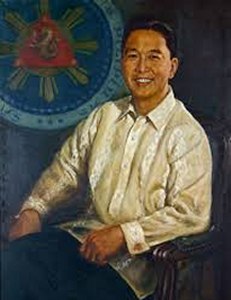
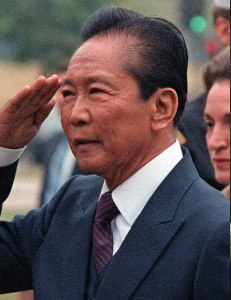
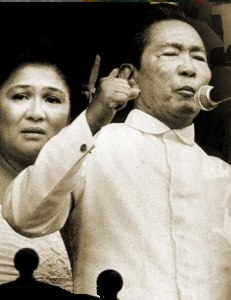
Corazon Aquino
| Date | Year | Cultural, natural, social and political events |
|---|---|---|
| March 25 | 1986 | President Corazon Aquino calls for a revolutionary government. The 1973 Constitution, drawn up under Marcos, is repealed. It is replaced by a provisional "Freedom Constitution" which restores basic democratic structures and basic civil rights. The political prisoners are amnestied, including the Communist leader Jose Maria Sison. The old parliament as well as Marcos KBL party are dissolved and high administrative officials are exchanged.
Their (at least initially) not necessarily competent and relatively unstable government is faced with high expectations of many short-term problems that can not be solved in the short term, and is threatened with, in particular, by military attempts by the military (7). Even in their reign many crises remain unresolved and only a few promises are actually fulfilled. |
| April 9 | 1986 | The MNLF has agreed an armistice with the government's representatives for the region 9 (Zambuanga del Norte, Zambuanga del Sur, Tawi-Tawi, Basilan, Jolo and Palawan). |
| June 1 | 1986 | During the first 100 days of the presidency of Aquino, there were 68 revolt-like incidents, killing 641 rebels, 450 soldiers, policemen and 394 civilians. The president will later be accused of a weakness in leadership, especially against the military. |
| July 3 | 1986 | Peace negotiations begin with the National Democratic Front (NDF), which, however, lead to no result. |
| July 6 | 1986 | Arturo Tolentino, Marcos's former Foreign Minister, occupied the Manila Hotel with 200 soldiers and declared his position as President of the Philippines. The rebels under his leadership, however, emerge after 40 hours. They found no support in the population.
Tolentino will not be punished later, the rebellious soldiers are only thrown to lie support. |
| September 2 | 1986 | Misuari returns from Lybia and plans again to lead a guerrilla war to create an independent state for the 5 million Muslims. President Aquino and Misuari meet in Zambuanga to discuss ways of ending the insurrection. |
| September 29 | 1986 | The arrest of leading communists (including the commanding officer of the NPA - Rodolfo Salias). Both the government and the NPA report later on targeted murders, which have been carried out by the other side. |
| December 2 | 1986 | In Northern Luzon, the "Cordillera Peoples Liberation Army" (CPLA), under the leadership of the former priest Conrado Balweg, split off from the NPA. The CPLA agreed a cease-fire with the government. See "Conrado Balweg - From Priest to Guerilla Leader" |
| January 4 | 1987 | On the occasion of peace talks with the government, MNLF negotiator Nur Misuari withdraws from the original goal of independence from Mindanao and restricts itself to regional autonomy. |
| January 22 | 1987 | 16 people die through military shots as about 6,000 farmers from Luzon try to reach the Malacanang Palace. They wanted to talk with the President about the promised land reform. The incident leads to a termination of the peace negotiations with the CPP / NPA. |
| January 27 | 1987 | Two Marcos-loyal military groups under Colonel dela Cruz and Colonel Canlas attack militia facilities and radio stations to overthrow the Aquino government. The rebellious soldiers capitulate after two days. |
| February 2 | 1987 | In a national decision, 81% vote for the new constitution. It enters into force on 11 February 1987 and provides for a parliamentary two-chamber system with the House of Representatives and the Senate. According to this constitution, a president may only govern once for six years. The American bases are to be closed in 1991 and the death penalty abolished. |
| April 19 | 1987 | Four-day armed clashes between government forces and NPA rebels in Bulacan. The military speaks of 33-48 killed NPA rebels, the NPA rebels of at least 18 killed soldiers. |
| April 22 | 1987 | 200 members of the House of Representatives and 24 senators are elected. 22 senators are the Aquino coalition "Lakas ng Bayan", the opposition group "Grand Alliance for Democracy" with Joseph Estrada and Juan Ponce Enrile only gets two seats.
The speaker of the House of Representatives is Ramon M. Mitra in July; Speaker of the Senate will be Jovita Salongo. |
| July 23 | 1987 | President Aquino signs the 50 billion peso-expensive agricultural reform program (CARP), which aims to help farmers grow agricultural property. Recourse should be given to private and state agricultural areas. The details of the details are reserved for the decision of the Congress. This delays the necessary resolutions, Finds decisions which can be circumvented by large landowners in case of imminent expropriations. The government lacks the money necessary for greater expropriations. |
| August | 1987 | A human rights organization reports on the existence of approximately 200 right-wing paramilitary "Vigilantes" citizenry in the country, in whose crossroads in particular left-wing organizations and their leaders.
These movements were initially largely tolerated, later transformed into a more state-controlled civil defense. |
| August 26 | 1987 | Strikes against gasoline price increases are paralyzing public transport.
17-hour battle of government forces and NPA rebels at Negros Occidental |
| August 28 | 1987 | Colonel Gringo Honasan starts the bloodiest coup attempt in the reign of President Aquino with about 800 right-wing soldiers. The soldiers attack the Radiostationen and the Malacanang Palace in Manila. Legaspi airport and military stations on Cebu are also targeting the rebels. See also: Gregorio Honasan - Putschist in perpetual suspicion
President Aquino appears on national television and calls on the armed forces to stop the coup as soon as possible. The putschists will gradually emerge in the next two days. The coup costs 12 government soldiers, 19 mutinies and 22 civilians. |
| September 2 | 1987 | Fights with NPA rebels near Davao. A short time later, NPA rebels break into Bicol bridges and interrupt the railroad to Bicol. |
| October 18 | 1987 | Lorenzo Ruiz is the first Filipino to be canonized by the Vatican. |
| November 26 | 1987 | Taifun Sisang races with a wind speed of more than 185 km / h over the southern Tagalog and Bicol. 656 people die, more than 500,000 people lose their accommodation. |
| December 10 | 1987 | 104 days after his coup attempt, Gringo Honasan is arrested in Metro Manila. |
| December 20 | 1987 | Ship collision between the islands of Mindoro and Ramblon. Of the more than 3,000 passengers, only 26 survive. One of the largest ship catastrophes on an international scale. |
| - | 1987 | The number of insurrection increases by almost one third compared to 1986, the number of civilians killed every day in civilian clashes decreases from 14 to 9 dead.
Killing of more than 16 policemen by NPA groups in Manila and Negros Oriental. |
| January 18 | 1988 | Local elections of provincial governors, mayors and municipal councils with high electoral participation. In the context of the elections, 98 cases of murder, 97 injuries and 40 kidnapping occur. |
| January 23 | 1988 | Appointment of Fidel Ramos, former General Staff, as Minister of Defense. |
| June 10 | 1988 | It is also clear to the government of Aquino that the inflow to the NPA is strongly linked to the uneven soil distribution. Ten out of 12 million small farmers have no land of their own, while five per cent of the population own 90 per cent of the agricultural area.
The "Comprehensive Agrarian Reform Law" is adopted. Nearly 10,000 hectares of land will be distributed to 3.8 million farmers over the next ten years. However, the implementation of the law largely fails because of the resistance of large landowners and tight budgets. A sweeping soil reform that deserves this name is still waiting. |
| August 13 | 1988 | Vice President Salvador Laurel calls on President Aquino to resign. He founded a new opposition coalition (UNA) together with former Minister of Justice, Juan Ponce Enrile. |
| October 18 | 1988 | The Philippine Foreign Minister and his American colleague are now negotiating about the US military bases in the Philippines. The agreement reached provides that the American bases remain until 1991 against an annual payment 481 million US $ in the Philippines. The Philippine Foreign Minister has to write bitter criticism because of this unexpectedly low payment. |
| October 21 | 1988 | Prosecution against Ferdinand Marcos and his wife Imelda before a court in New York. They are accused of plunder of a total of 268 million dollars. Imelda Marcos rejects the accusation. The prosecution against Ferdinand Marcos will be postponed for health reasons. |
| October 24 | 1988 | Taifun Unsang caused the death of about 200 people in the southern Philippines. In the storm, the passenger ship "Doña Marylin" capsizes. Only half of the 600 passengers survived. |
| November 12 | 1988 | The presumed NPA boss Romulo Kintanar and his wife Maria-Gloria Jopson succeeded in escaping from the headquarters of the Philippine Constabulary (police department). |
| March 1 | 1989 | President Aquino promises far-reaching deregulation of the Philippine economy to promote private initiatives. It remains largely in the declaration of intent.
An improvement in the living standards of wider population populations is not taking place and the foreign debt now amounts to approximately 30 billion US $. In the budget almost 50 per cent have to be released for debt repayments. |
| September 28 | 1989 | At the age of 72, ex-President Marcos dies in Hawaii. President Aquino rejects a burial on Philippine soil. |
| October 6 | 1989 | Taifun "Rubing" leads to the death of 116 people in northern Luzon. A few days later, typhoon "Saling" kills 55 people in Manila and southern Luzon. |
| November 16 | 1989 | An anthropologist conference in Washington confirms the authenticity of the Tasaday tribe. His discovery in 1971 was long considered a public relation - hoax. |
| November 30 | 1989 | Again a coup attempt of nearly 3000 rebel right-wing militants, the so-called December coup.
The group succeeds to take over the Villamor Air Base as well as two TV stations. take. They get possession of tanks. They also drop bombs from aircraft on Malacanang Palace. Larger parts of the military, however, do not join the coup. President Aquino asked the US for help. American F-4 combat aircraft appear in the sky and take over the airspace superiority. The government is trying to downplay American aid. For a long time there is a kind of stalemate in Manila. The rebels, who have retired from 5-star hotels in Makati, where they also take foreign hostages are militarily too weak, the government forces on the other hand want to avoid civilians. President Aquino calls for the national emergency. The danger of a putsch lasts until December 7th. Then the rebels, who could not overthrow the government, were nevertheless satisfied with their partisanship in their barracks. In the attempt to overthrow nearly 100 people die. |
| February 27 | 1990 | Senator Juan Ponce Enrile is arrested. He is accused of having met Gringo Honasan, a putsch leader, who is responsible for the December putsch in 1989. Enrile will be released later on the order of the Supreme Court against a security deposit. |
| Mai 13 | 1990 | Two American soldiers are shot near Clark Air Base by NPA rebels. |
| Mai 28 | 1990 | The US State Department warns against travel to the Philippines as long as the negotiations on the American bases continue. About a month later, the US Peace Corps withdraws from the Philippines. |
| June 6 | 1990 | A heavy earthquake of magnitude 6 - 7 shocks Luzon and Manila. About 1,600 people die. Buildings and roads are damaged. |
| November 19 | 1990 | Popular vote in the Muslim populated areas in Mindanao over a limited autonomy. It is, contrary to expectations, rejected by a majority, including the Christian population. The government then only discusses the autonomy of four provinces (Lanao del Sur, Maguindanao, Sulu and Tiwi) with the MNLF instead of 13 provinces. |
| June 12 | 1990 | Violent eruption of Mount Pinatubo in Central Luzon after 600 years of rest. It is the world's second most powerful eruption of a volcano in the 20th century. More than 700 people are killed, 200,000 people become homeless. Because of the immense ash blow-outs, the world-wide average temperature drops by 1.5 degrees. |
| September 16 | 1991 | The agreement on the use of American military bases in the Philippines ends.
The American military bases have become a bone of contention. Advocates of extending the contract with the Americans bring economic benefits and increased national security into the field. The opponents see the bases threatening national sovereignty and fear that the Philippines could be involuntarily dragged into armed conflicts. Despite the advocacy of President Aquino and the new treaty with the US already negotiated, the Philippine Senate rejects an extension of the US-Bases agreement. The US will then enter, among other things, the Clark Air Base in Pampanga and the naval base Subic Bay in Zambales. The Clark Air Base had previously become unusable through the ashes and magmash of Mount Pinatubo. The American military facilities were of great importance during the Vietnam War. They were the second largest employer in the Philippines at the time of their decision to maintain them. The withdrawal marks the end of a nearly 100-year continuous military presence in the Philippines. |
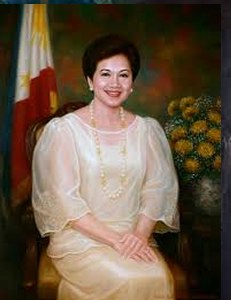
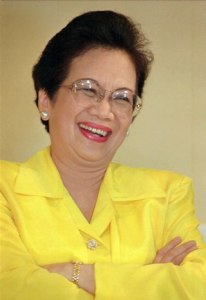
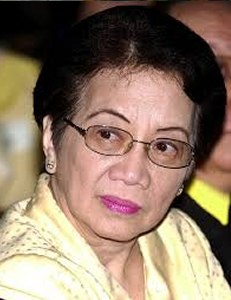
Fidel Ramos
| Date | Year | Cultural, natural, social and political events |
|---|---|---|
| May 11 | 1992 | Presidential elections after the term of office of President Aquino had expired. It is a question of the President's office, among others, Fidel Ramos, Eduardo Conjuangco, Jovito Salango, Joseph Estrada, Salvador Laurel, Ramon Mitra and Imelda Marcos. |
| June 30 | 1992 | Appointment of Fidel Ramos as the 8th and first Protestant President of the Philippines. Joseph Estrada will be vice president.
His broad-based government program is based on that of his presidents with a strong emphasis on "order and stability" and the goal of a stronger industrial growth ("Philippines 2000"). Under the auspices of national reconciliation, passed an amnesty law for all rebels who put down the arms as well as release of formerly imprisoned rebels. Re-admission of the Communist Party. President Ramos renounces Sabah in favor of the Malaysian Federation. The Philippines had raised territorial claims on Sabah since 1947, since it belonged to the Sultan of Sulu since the 17th century. President Ramos was relatively popular in his reign. But he also failed to solve the key economic and social key problems of his country (soil reform, corruption, unemployment). |
| April 24 | 1993 | Because of the suspicion of corruption, almost the entire leadership of the National Police is being replaced. |
| - | 1993 | Ramos begins restructuring the army and the police. In the following years, the national police will be given the task of counter-insurgency, while the armed forces are to ensure external security. The 562 private armies of local politicians and large-scale owners who are under suspicion of terror are also to be more closely controlled. |
| July 26 | 1993 | Ramos states in the Congress that, with an annual population growth rate of 2.3%, the quality of life of broad population groups can not be decisively improved. He advocates a family planning program to reduce population growth below 2%. The Catholic Church - and especially the influential Cardinal Sin - is critical of the president's plans to control the birth of his mother. They would destroy the "Philippine family". |
| September 7 | 1993 | The corpse of former President Ferdinand Marcos is transferred to the Philippines and buried in Batac, northern Luzon. The feared grand demonstrations remained. |
| September 24 | 1993 | Imelda Marcos is found guilty of corruption in two charges of indictment and sentenced to 9-12 years imprisonment. She goes into appeal. |
| September | 1993 | In order to reduce budgetary deficit, President Ramos is planning an increase in indirect taxes on petroleum products. The project raises demonstrations all over the country. |
| November 7 | 1993 | A renewed peace talks with the Moro National Liberation Front (MNLF), which has been fighting against the Manila government since 1972. A cease-fire is decided. The government is now ready to allow the introduction of Islamic law in Muslim areas. Not all Muslim groups join this peace treaty. |
| - | 1993 | Energy problems towards the end of the year. The cuts in electricity, for example in the Manila region, lead to economic difficulties and increase the number of unemployed. |
| January | 1994 | Reintroduction of the death penalty in 13 criminal cases (including murder, treason, kidnapping, corruption). Vice President Joseph Estrada is leading a campaign against crime. |
| January 31 | 1994 | Peace agreement with the MNLF. It replaces the Tripoli Agreement and grants the Muslim minority in the south Mindanaos a broader political autonomy. The competing MILF, however, continues to fight for its own state. |
| February 9 | 1994 | General strike because of the planned increase in taxes on petroleum products. The planned increase is canceled. Ramos also failed at the Supreme Court in his plans to close loophole in the collection of VAT. The IMF recommended the extension of VAT. |
| March | 1994 | President Ramos proclaims a general amnesty for all rebels, policemen and soldiers who committed crimes in connection with fighting. The NPA does not find a closed attitude on this point. A former leader who welcomes the amnesty is shot. |
| May 31 | 1994 | A private Timor conference is being held in Manila under the protests of the Indonesian government. Timor had been occupied by Indonesia in 1975. |
| - | 1994 | The IMF grants the Philippines a credit of US $ 684 million. The Philippines is doubling its growth rate to 5.1% this year. This is also due to improved electricity supply. |
| January | 1995 | The Philippine Navy discovers a Chinese garrison on the Mischief Reef in the South China Sea west of Palawan. The reef is part of the controversial Spratly Islands. There is a violent change of notes with Rotchina. See also: The Southeast Asian race around the Spratly Islands
As a result, the Philippines will begin to modernize their forces in a 15-year program. |
| May 8 | 1995 | Both the Senate and the House of Representatives are able to gain a significant majority. Imelda Marcos also succeeded in winning a seat in the House of Representatives. |
| September 6 | 1995 | President Ramos announces that he will resign at the end of his term of office on June 30, 1998. In this way, he concludes speculations that he is seeking a further term of office through constitutional changes. |
| November | 1995 | The extremely powerful typhoon "Angela" kills more than 700 people. |
| - | 1995 | Furthermore guerrilla activities in the south. Responsible for this are more radical splits of the MNLF, which do not want to support the peace treaty aimed at by the MNLF. The Moro Islamic Liberation Front (MILF), which has a jungle army of 8,000 - 30,000 men, as well as the much more radical Abu Sayaf ("Sword of the Father"), was partly trained abroad. The latter, among other things, attacks Ipil, a predominantly Christian city on Mindanao. It kills at least 47 inhabitants and plunder banks.
It is estimated that the Mindanao conflict has cost between 50,000 and 150,000 people by this time. The influence zones of the NPA are diminishing. It loses political significance. Internal disputes, lack of money, growing military pressure and the worldwide decline of communism all contribute to the weakening of the NPA. Some NPA members now shift their focus to cities, criminalizing other groups. |
| 1995 | Swiss banks transfer 475 million US $ from the assets accumulated by former President Marcos. It is assumed that billions still lie on secret accounts. | |
| - | 1995 | Economic growth is still strong at 6% after years of stagnation. The local agricultural production is no longer enough to feed the growing population.
In order to escape the widespread poverty in the country, now about 4.2 million Filipinos - mostly as domestic helpers - are working abroad. They transfer about $ 2 billion a year. In this context, we can look at some processes against Filipinos. In Singapore, a 42-year-old Philippine housekeeper is hanged because she is accused of twofold murder. But their guilt is questioned. In September, a 16-year-old Filipina is sentenced to death in the United Arab Emirates. She had stabbed her employer when he tried to rape her. The death sentence is later converted into a prison sentence. |
| September 30 | 1996 | After preliminary talks with the government in Manila, Nur Misuari, the representative of the MNLF, signed a treaty establishing the "Autonomous Region in Muslim Mindanao" (ARMM). The 14 provinces of the ARMM covers approximately a quarter of the country's land area and is inhabited by about three million Muslims. In not a few provinces, the Christian population now dominates.
The former rebel Misuari is appointed governor-friendly governor. In his appeal, Nur Misuari emphasizes that the MNLF is not ready to hand over its arms to the government. On the other hand, parts of the MNLF troops estimated at 16,000 men are taken over by the Philippine army and police. Promised funding from the government for the new autonomous region will be largely left out. Some Christian populations in the ARMM region are unaware of the autonomous status of the region. They are seeking a referendum for 1998. The MILF continues its struggle against the government. |
| - | 1997 | Economic growth weakness in connection with the South East Asia crisis. The value of the peso falls by 36% in the second half-year. In addition, the drought reduces the rice harvest of the country.
The radical MILF continues its fight with guerrilla attacks and bomb attacks on Mindanao. |
| March 18 | 1997 | The Supreme Court does not allow a referendum on a second re-election of President Ramos. Economic circles had advocated a re-election, the former president Cory Aquino and Cardinal Sin spoke out against a re-election. |
| April | 1997 | The Philippine Navy discovers another Chinese-held reef in the Spratly Sea, the political tensions with China are growing. In May, however, the Chinese retreat. |
| August 21 | 1997 | The relatively popular vice president Joseph Estrada, who appeared before his political career as an actor in second-rate films and also was mayor in a district of Manila, disputes Ramos's economic competence. He is a candidate for the 1998 presidential elections.
Even under the presidency of Fidel Ramos, the Mindanao conflict, the unfair distribution of land, corruption, the high budget deficit and the immense foreign debt (US $ 52 billion) were not offset. His initial prestige as a "foe" faded during his reign. |
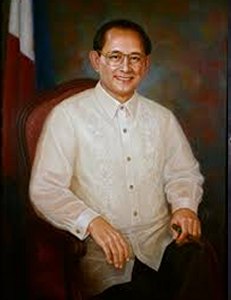
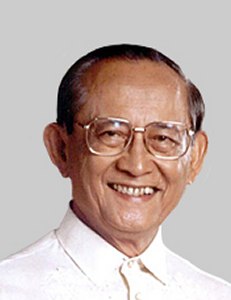
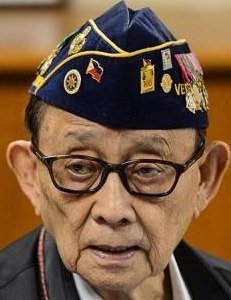
Joseph Estrada
| Date | Year | Cultural, natural, social and political events |
|---|---|---|
| May 11 | 1998 | With 46.3% of the votes, Joseph Estrada, who is the man of the "simple people", clearly wins the presidential election before his challengers. Joseph Estrada had denied his election campaign with law-and-order slogans and simple populist demands. He promises, among other things, to give priority to combating corruption. According to press reports, Marcos "Cronies" such as Lucio Tan (Fortuna Tabacco Corporation, PAL) and Eduardo Danding Conjuangco (San Miguel Corporation) financed his campaign. The latter receives his assets confiscated by the government at first. See " The Chinoys - Influential Minority in the Philippines" .
The national economist and daughter of former President Macapagal, the scandal-free Gloria Macapagal-Arroyo - belonging to another party grouping - holds the position of vice-president with 47% of the votes. The takeovers will be carried out on 30.06.1998. President Estrada, in particular, is confronted with a strong budget deficit. Tax evasion, a lack of control (shadow economy) and undisciplined spending policy are the causes of the deficit. In the lawn mower process, Estrada cuts all government spending by 25%. The IMF criticizes the inadequate and faulty tax collection in the country. The Philippines is less affected by the economic recession in Southeast Asia. Exports are rising. The drought associated with the El Nino, however, leads to a 7% decline in agricultural production. The MILF under its leader Hashim Salamat remains unchanged in an independent Muslim state. The radical Abu Sayyaf movement has grown to about 2000 members. Their actions include bomb attacks, arson attacks and the kidnapping of wealthy businessmen and tourists. The popularity of Estradas in the population fades quickly, as its clumsy, relatively passive style of leadership and its debauchery and affair become more popular. Even with him, many of the political campaign promises remain unresolved. |
| September 9 | 1998 | Ship accident near Manila with 43 dead. |
| October | 1998 | Typhoon "Zeb" kills 69 people. |
| December 3 | 1998 | Fire in an orphanage in Manila with at least 30 deaths. |
| - | 1999 | President Estrada wants to change the hastily drafted constitution of 1896, and in doing so he highlights in particular his efforts for more foreign investments. His opponents maintain, however, that he intends to consolidate his political power, especially through constitutional changes, and to ensure a re-election.
In the middle of the year, political demonstrations - supported also by Corazon Aquino and Cardinal Sin. The reproach of the Cronyimus (economic favoring of followers) becomes louder. According to government figures, the MILF, which is now fighting side by side with the NPA, breaks several ceasefire agreements. Tensions around Spratly Islands with both Malaysia and China. |
| May | 1999 | In view of the tensions surrounding the Spratly Islands, the Philippine Senate, eight years after the withdrawal of the Americans from their former bases, ratifies a law that permits visits by the American military and joint exercises with the Philippine forces. The Philippine military is generally considered weak and underfunded. |
| July 26 | 1999 | In an address before the Congress, Estrada appealed to the accusation of corruption and cronyism. He also did not want to interfere with press freedom. |
| December 31 | 1999 | Assassination of Conrado Balweg |
| January 5 | 2000 | Finance Minister Edgardo retires and accuses the government of cultivating a "culture of corruption". |
| April | 2000 | Aprodocio Laquian, the president Estrada's chief of staff, accused Estrada of keeping heavy drinking parties with his friends and advisors. Urgently formulated decrees would have to be withdrawn later often. Laquian is then forced to resign. |
| April 23 | 2000 | Abu Sayyaf, the extremist group of Muslims, is kidnapping 21 people, mostly western tourists, from a holiday destination in Malaysia. The Philippine government refuses this time to pay a high ransom. Lybia intervenes in efforts to release the displaced and is reportedly paying $ 1 million for each hostage.
In September 4000 additional troops are dispatched to Jolo to smash the Abu Sayyaf group. |
| July 9 | 2000 | The armed conflicts in the south, which cost approximately 120,000 lives in the last three decades, continue. In a serious fight, MILF Headquarters Camp Akubakar is taken by 40,000 government soldiers on Mindanao. The MILF escapes into the underground and into exile and proclaims a "holy war" ("jihad") against the government.
Later, 21 Christians will be killed in a village on Mindanao. |
| July 11 | 2000 | After a 5-day typhoon spill, a garbage plant spills parts of a slum settlement outside Manila. 215 dead are to be lamented. |
| October 18 | 2000 | Vice President Gloria Macapagal and ex-presidents Corazon Aquino and Fidel Ramos call on Estrada to resign. |
| November 13 | 2000 | The House of Representatives is initiating an impeachment against President Estrada. They are accused of bribery, corruption, advantage, infidelity, misuse of authority, and constitutional harm. The Senate later joined the trial. The procedure is however blocked here by some Estrada senators. They refuse to allow burdensome evidence. The process is stopped.
A major burden is the provincial governor Luis Singson, who says that Estrada has tried to bribe him with $ 11 million. The money came from illegal betting and tobacco taxation. However, Estrada contests the allegations. It comes to nationwide mass demonstrations against Estrada (EDSA II). |
| January 19 | 2001 | The protests against the increasingly isolated President Estrada are continuing. The Chief of Staff of General Angelo Rayes informs Estrada that the military is withdrawing his support. Government members also deprive him of their support. President Estrada fled the government palace at night. |

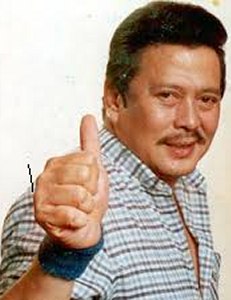
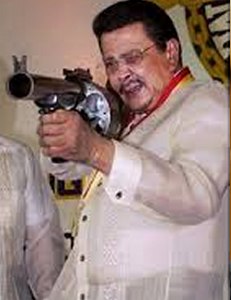
Gloria Macapagal Arroyo
| Date | Year | Cultural, natural, social and political events |
|---|---|---|
| January 20 | 2001 | The Supreme Court declared the presidential position vacant and appointed Vice-President Gloria Macapagal to the 10th President of the Philippines. As Vice President, she had increasingly distanced herself from the president and had an opposition role.
Estrada later pointed out that he had never resigned, but had merely resigned his post at short notice. According to Philippine law, he continues to be president. The Supreme Court can not share this view. |
| April 12 | 2001 | Government forces are attacking a nearby Abu Sayyaf camp near the island of Jolo, and free a kidnapped American. The strength of Abu Sayyaf is estimated to be about 1,000 men. Kidnapping is a focus of their guerrilla activity. A month later the group kidnaps 20 people on Palawan and takes her to Basilan. An American abduction victim is later beheaded.
According to US reports, Abu Sayyaf also maintains relations with terrorist leader Osama bin Laden. |
| April 25 | 2001 | Ex-President Estrada is arrested, among other things, for bribery, document falsification and economic plundering of the country. Theoretically, because of the high degree of corruption he is accused of, he can count on the death penalty. However, his court proceedings are delayed for years
About 20,000 Estrada supporters are demonstrating on 30.04. In front of the Presidential Palace, there are four dead. President Macapagal declares for five days, for reasons of public security, the "state of rebellion", which ranks among the state interventions under the "Martial Law". |
| May 14 | 2001 | More than 100 people are killed during the congress and local elections. The President can now rely on a broader Senate majority. |
| July 22 | 2001 | President Arroyo explains the fight against poverty as the main focus of her government work. It wants to create a million jobs, push ahead with the modernization of the country and provide landless farmers with 200,000 hectares of government land.
The President wants to clarify allegations that her husband, a wealthy lawyer, had been guilty of corruption. |
| August 7 | 2001 | An armistice agreement will be concluded with the MILF. After several breaks, it is renewed in October. |
| November 19 | 2001 | A rebel fraction of the more peaceful MNLF, with which there has been a peace agreement for five years, no longer adheres to the agreement. She wants to prevent the election of a Misuari successor. There are battles in which more than 100 people are killed. In the city of Zambuanga, 118 hostages are used as protective shields against the attacking government forces. The hostages are freed on the negotiation path and the MNLF founder Misuari in malaysian waters. |
| - | 2002 | In 2002, fighting in the south of Mindanao continues to flare. Abu Sayyaf and the MILF continue to use the resources of kidnapping and bomb attacks (Zambuanga, General Santos City).
Kidnapping is also becoming a business in Manila. There will be about 20 courses in Manila, which specialize in the kidnapping of wealthy businessmen and their families. A captured gang leader succeeds in short-term escape from prison in February. He is later shot. In examining the case, it turns out that a gang member was a cop. |
| January | 2002 | On request of the Philippine government, up to 4,000 American (military) advisors are coming to the country to advise the military and police on anti-guerrilla issues, but also in the fight against organized crime and drug trafficking. You have the command to shoot only when you are attacked. Their commitment to Philippine territory is not undisputed and leads to the resignation of the Foreign Minister during the year. |
| February 25 | 2002 | The court case against former President Estrada continues to drag on without result. In a TV interview, Estrada concedes that he has signed bank documents with a false name, but denies the corruption charges. |
| April | 2002 | The IMF gives the government's economic policy satisfactory marks. Economic growth is 3-4%. The budget deficit could be limited. However, the foreign debt is US $ 53.5 billion. |
| June | 2002 | The US awards five Abu Sayyaf leaders each with $ 5 million. One of the American trained Philippine ranger units succeeds to capture a group of 50 Abu Sayyaf fighters. |
| December 30 | 2002 | President Arroyo announced that she would not face a 2004 re-election. |
| - | 2003 | Romors of putsch determine the year. The economic growth of the country is below that of 2002, but still higher than in some other Southeast Asian countries.
President Arroyo decides to join the presidential elections in 2004. |
| March 4 | 2003 | It is assumed that the MILF is responsible for two bomb attacks on 4 March and 2 April in Davao. They lead to the death of 39 persons.
In addition to the training forces already in use, the USA offers a further 1700 combat soldiers. The Philippine Constitution, however, prohibits its use. |
| July 13 | 2003 | The leader of the MILF Hashim Salamat dies at a heart attack.
A day later, a leader and bomb expert of the Jemaah Islamiyah - presumably with the help of a corrupt police officer - managed to escape from a prison in Manila. He is tracked and shot in October. |
| July 26 | 2003 | Rumors of a putsch make the round in Manila. The next day, 320 young officers were arrested, who had settled in a mansion in Manila, and who secured it with explosives. The young officers accuse President Arroyo and Defense Secretary Reyes of a corrupt and inefficient government system.
It is assumed that the coup attempt could be controlled by supporters of the former ex-president or also by the former senator and repeated putschist Gregorio Honasan. Honasan contests the putschverwicklungen and remains in the underground. The President has set up an investigation committee and promises to bring the military back on track. |
| August | 2003 | Defense Minister Reyes retires. He warns against forces that could endanger democracy. In September, he announced that the opposition generals offered $ 185,000 and soldiers $ 950 for a coup attempt. |
| - | 2004 | Expected foreign investments do not arrive. Potential investors are afraid of a country characterized by extreme corruption, excessive bureaucracy and high crime (kidnapping).
The unemployment rate rises to 5%. Approximately eight million Filipinos search as Oversea Workers work abroad. They provide the country with foreign exchange income of about US $ 10 billion. Approx. 20 percent of the population would like to emigrate. The budget deficit is more than 560 billion pesos. |
| February 26 | 2004 | Bomb explosion on a ferry in Manila Bay. Two Abu Sayyaf terrorists are arrested. Of the 900 persons on board 166 are killed or missing. |
| March | 2004 | Four Abu Sayyaf members are arrested for allegedly bombing attacks on shopping centers and trains in Manila. |
| May 10 | 2004 | Presidential elections won by Gloria Macapagal Arroyo with a voiced lead of a million in front of her challenger the film star, but little politician Ferdinand Poe Jr.. Arroyo, in turn, had placed economic growth and anti-corruption at the center of his election campaign.
Quite a few consider Poe as a man advanced by former President Estrada or Marcos supporters. The vice-candidate proposed by Arroyo is also a prominent radio moderator, which highlights the close connection between show business and politics in the Philippines. 115 dead are related to the fiercely conducted election campaign. Poe accuses Arroyo of electoral rule manipulation. |
| May 10 | 2004 | Gloria Macapagal-Arroyo is president for another six years.
In her opening speech, she denounces tax evasion. Both they and opposition leaders plead to replace the previous American presidential presidential constitution with a Prime Minister-style constitution with a Prime Minister. Legislation in a parliament with party fractions would be facilitated and accelerated. Representatives of the Senate react skeptically to these proposals, since they also include a loss of power by the Senate. |
| November | 2004 | Heavy rains end of November and early December cause floods and landslides east of Manila. 1062 people are killed and 552 missing. |
| December 13 | 2004 | Opposition politician Poe died of a stroke. |
| February 14 | 2005 | Bomb attacks in Manila and two other cities. There are eight dead and more than one hundred wounded. They are again associated with Abu Sayyaf. |
| June 21 | 2005 | Death of James Cardinal Sin. He was three decades archbishop of Manila and had a bowl roll in connection with the overthrow of former presidents Marcos and Estrada. |
| June | 2005 | A tape recording of a conversation of the President with an election commissioner from the year 2004 is published. The recorded conversation can be interpreted as an attempt at electoral manipulation (commissioner: "We do our best"). President Arroyo admits on 27.06. having had this conversation. She argues that she did not want to distort the election result, but only to ensure that her voice is not removed by manipulation.
However, she can not convince the opposition with her arguments. Her popularity fades. There are demonstrations and counterdemonstrations. |
| June | 2005 | There are allegations that military and police forces arbitrarily killed leftist activists. Furthermore, they accused ther husband and son of commissions from illegal gambling. The two accused later flee to San Francisco. |
| July 13 | 2005 | Large demonstrations in Manila against President Arroyo. |
| July | 2005 | President Aquino dismissed 10 cabinet members. The former president, Aquino, is asked to resign. However, the judicial committee, and later the House of Representatives' general assembly, rejected 158 by 51 votes to initiate an dismiss proceeding against Arroyo. |
| July 25 | 2005 | President Arroyo calls for a constitutional change in favor of a parliamentary-federal system. |
| February 24 | 2006 | The military administration announces that it has succeeded in preventing a coup against President Arroyo. It would have been the twelfth coup attempt in twenty years. President Arroyo announces a short-term emergency, which also forbids public demonstrations. Nevertheless, there are demonstrations.
Former President Corazon Aquino once again accused her of distorting the elections in 2004. |
| March 3 | 2006 | The "State of Emergency" was lifted, but in the following July again, militants were arrested on suspicions of having planned a coup. |
| May 11 | 2006 | Typhoon "Caloy" made landfall on Samar. On the next day, it made landfall on Mindoro. Caloy caused the deaths of 41 and $1.9 million in damages. |
| June 13 | 2006 | A group calling itself Taong Bayan at Kawal, or Masses and Soldiers, claims for an early-morning bomb blast at a police headquarters in Manila, as well as earlier blasts at Manila office building on June 6, an explosion outside the home of an ally of Gloria Macapagal-Arroyo last week and two simultaneous bomb blasts in police stations on June 11. The group denies it was behind a bombing in Lipa City that injured nine people on June 11. |
| June 24 | 2006 | President Arroyo signed the repeal of the death penalty law |
| July 14 | 2006 | Mayon Volcano in Albay spews out lava and ash. The Philippine Institute of Volcanology and Seismology raised the alert level from level 1 to level 3, prompting evacuations. |
| July 24 | 2006 | Senator Manuel Villar is elected as the new Senate President, replacing Franklin Drilon at the resumption of the regular session of Congress.
President Arroyo suspends classes in Metro Manila and other areas due to Typhoon Glenda |
| August 7 | 2006 | Mayon Volcano intensifies its volcanic activity, leading the Philippine Institute of Volcanology and Seismology to raise the alert level from level 3 to level 4, which prompted mandatory evacuation procedures. |
| August 11 | 2006 | An oil spill off the coast of Guimaras occurs, causing widespread environmental damage. |
| September 28 | 2006 | Typhoon Milenyo causes widespread damage throughout Luzon, causing at least two deaths, destruction to property, suspension of classes and the Metrorail, closing down of government offices, suspension of trading at the Philippine Stock Exchange, the paralyzation of the South Luzon Expressway, cancellation of flights at the Ninoy Aquino International Airport and a Luzon-wide blackout. |
| October 17 | 2006 | Supporters of Mayor Jejomar Binay of Makati City barricade themselves at the front of city hall as the Department of Interior and Local Government hands out their suspension order against the Mayor, Vice Mayor and seven councilors |
| October 31 | 2006 | Voters in Maguindanao's 29 municipalities have approved the creation of a new province to be composed of 10 towns, named Shariff Kabunsuan. It became the Philippines' 80th province and the 6th in the Autonomous Region in Muslim Mindanao. |
| December 1 | 2006 | Albay declares a state of calamity has Typhoon Reming causes 198 deaths and counting |
| December 3 | 2006 | President Gloria Macapagal-Arroyo declared a "state of national calamity" as 406 perished after Typhoon Reming caused several mudslides around Mayon Volcano. |
| December 13 | 2006 | The National Disaster Coordinating Council revised the death tolls for Typhoon Reming, with 720 dead, 2,360 injured and 762 missing persons. |
| December 16 | 2006 | Abra Representative Luis Bersamin, Jr. was gunned down during a wedding ceremony at Quezon City |
| - | 2007 | The Philippine economy grew at its fastest pace in three decades in 2007, with real GDP growth exceeding 7%.
The peso strengthened by nearly 20% in 2007, making it by far Asia's best performing currency for the year, a fact attributed to a combination of increased remittances from overseas Filipino workers and a strong domestic economy |
| January 13 | 2007 | 12th ASEAN Summit was held in Mandaue City. |
| July 11 | 2007 | Fourteen members of the Philippine Marines were found beheaded after an encounter against Islamic rebels in the province of Basilan |
| July 27 | 2007 | The Department of Agriculture declares an outbreak of hog cholera at the provinces of Pampanga and Bulacan. |
| September 12 | 2007 | The Sandiganbayan convicted former president Joseph Estrada for plunder and sentenced him to reclusion perpetua while acquitting him and his co-accused on other charges. |
| October 19 | 2007 | An explosion at Glorietta mall in Makati kills 11 and injures at least a hundred. |
| October 26 | 2007 | Former President Joseph Estrada was pardoned and free from jail after his trial. |
| November 13 | 2007 | An explosion at the Philippine House of Representatives building in Quezon City kills four people, including Congressman Wahab Akbar. |
| November 29 | 2007 | The Armed Forces of the Philippines lays siege to The Peninsula Manila after soldiers led by Senator Antonio Trillanes IV stage a mutiny. |
| January 31 | 2008 | The National Economic and Development Authority announced that the country's 2007 full year gross domestic product indicated a growth of 7.3%, and a growth of 7.8% for the gross national product, the highest such figures since 1977 |
| February 4 | 2008 | The House of Representatives voted to replace House Speaker Jose de Venecia with Prospero Nograles. Shortly before his removal, de Venecia criticized the administration of President Gloria Macapagal-Arroyo and announced to the media that he was joining the political opposition. |
| March 11 | 2008 | A Manila trial court acquitted former First Lady Imelda Marcos of 32 counts of illegal money transfers |
| April 1 | 2008 | Social Welfare and Development Secretary Esperanza Cabral calls for a ban on foreigners availing of Philippine kidney transplants, after reports of destitute Filipinos selling their kidneys for paltry sums |
| April 7 | 2008 | Amidst growing concerns over a feared shortage of rice in the Philippines, President Macapagal-Arroyo lifts quotas on the importation of rice by private traders |
| June 21 | 2008 | The ship MV Princess of the Stars, owned by Sulpicio Lines that carried 626 passengers and 121 crew members, stalled in rough seas near Sibuyan Island in the central Philippines. The ship left Manila Saturday morning. Typhoon Frank caused the ship to sink, though it was previously reported that the ship experienced engine failure. |
| August 25 | 2008 | The peace talks between Government of the Philippines (GRP) and Moro Islamic Liberation Front (MILF) collapsed after the Supreme Court declares the Memorandum of Agreement on Ancestral Domain (MOA-AD) is unconstitutional. |
| January 5 | 2009 | Three Red Cross officials, Swiss Andreas Notter, Filipino Mary Jane Lacaba and Italian Eugenio Vagni were kidnapped. Andreas Notter and Mary Jane Lacaba were released four months later. Eugenio Vagni was released six months later on July 12. |
| May 22 | 2009 | The 2009 flu pandemic, which was an outbreak, has entered the Philippines. |
| June 22 | 2009 | First death caused by H1N1 confirmed in the Philippines and also first death in Asia. |
| August 1 | 2009 | Former president Corazon Aquino dies of cardiorespiratory arrest due to complications caused by colorectal cancer. Over a million people attend her wake at the Manila Cathedral and funeral procession leading to the Manila Memorial Park in Sucat, Parañaque. |
| August 8 | 2009 | Typhoon Morakot, locally known as Kiko, killed dozens of people, affected over 28,000 people in the Philippines |
| September 6 | 2009 | At least nine people have died after SuperFerry 9 sank with over 960 passengers on board sank off the coast of the Zamboanga Peninsula. Thirty more are still unaccounted for |
| September 26 | 2009 | Typhoon Ketsana locally known as Ondoy, caused widespread floods in Metro Manila and surrounding provinces, 25 provinces together with Metro Manila declaring a state of calamity and leaving 246 dead and 38 missing. |
| November | 2009 | Arroyo formally declared her intention to run for a seat in the House of Representatives representing the 2nd District of Pampanga, making her the second Philippine President - after Jose P. Laurel - to pursue a lower office after the expiration of their presidency. |
| November 23 | 2009 | A massacre in the Maguindanao province on the island of Mindanao in the Philippines was held and kills at least 60 persons. Philippine president Gloria Macapagal-Arroyo responded to the news of the massacre by declaring a state of emergency in Maguindanao, Sultan Kudarat and Cotabato City |
| December 4 | 2009 | President Gloria Macapagal-Arroyo has officially placed Maguindanao province under a state of martial law. The declaration, also suspended the writ of habeas corpus in the province. The announcement was made days after hundreds of government troops were sent to the province, which would later raid armories of the powerful Ampatuan clan. The Ampatuan family was implicated in a gruesome massacre that saw the murder of 57 persons, including women members of the rival Mangudadatu clan, human rights lawyers, and 31 media workers, in the worst incident of political violence in the nation's history. It has also been condemned worldwide as the worst loss of life of media professionals in one day in the history of journalism |
| December 10 | 2009 | 18 hostages are released after at least 65 people are kidnapped by gunmen in Agusan del Sur, Mindanao, the Philippines. |
| December 12 | 2009 | President Gloria Arroyo lifts martial law in Maguindanao in the south of the country, where 57 people were killed in political violence there last month |
| February 21 | 2010 | One of Abu Sayyaf senior leaders, Albader Parad, has been killed. |
| May 10 | 2010 | Automated national elections was held in the Philippines for the first time |

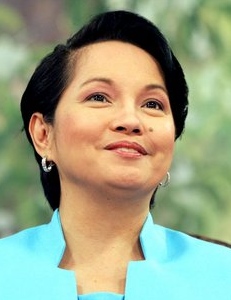
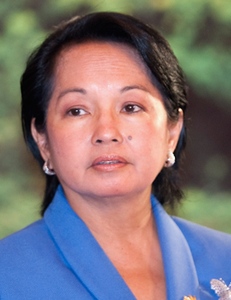
Benigno Aquino III
| Date | Year | Cultural, natural, social and political events |
|---|---|---|
| June 30 | 2010 | Benigno S. Aquino III is inaugurated as the 15th President of the Philippines at the Quirino Grandstand.
Vice president becomes Jejomar Binay (PDP-Laban). Juan Ponce Enrile is elected Senate president. |
| August 23 | 2010 | Hostage-taking incident in Quirino Grandstand. This incident caused the straining of ties between Hong Kong and the Philippines |
| September 26 | 2010 | An explosion rocks the De La Salle University in Manila during the last day of the 2010 Bar Exams. |
| October 18 | 2010 | Typhoon Megi, locally known as Juan, hits northern Luzon. It was among the most intense tropical cyclones ever recorded. |
| November 23 | 2010 | Department of Tourism (DOT) Undersecretary Vicente Romano III officially resigned his post, as a result of a controversial tourism promotion campaign called "Pilipinas Kay Ganda" |
| December 16 | 2010 | The Bangko Sentral ng Pilipinas (Central Bank of the Philippines) announced the release of new peso bills and presented their new design. |
| December 27 | 2010 | President Benigno S. Aquino III signed the P1.645-trillion national budget for 2011 |
| January 5 | 2011 | Heavy rains spawn flash floods and landslides that leave at least 10 people dead in several regions in Mindanao |
| January 23 | 2011 | The death toll from the 2010-2011 Philippine floods rises to 68 with 26 others still missing |
| January 25 | 2011 | A bus explosion in Makati City kills at least four people and wounds at least 18 others |
| January 28 | 2011 | President Benigno Aquino III puts up a PHP 1-million reward for information leading to the arrest of the people behind the January 25 bombing of a passenger bus. |
| February 20 | 2011 | After months of little activity, the Bulusan volcano suddenly erupts and sends a plume of ash 2 kilometers high |
| April 2-6 | 2011 | Agusan del Sur hostage crisis. |
| May 8-9 | 2011 | Typhoon Bebeng entered the Philippine area of Responsibility, and hits Bicol region where 20 people reported dead while 2 still missing. In May 10, the government of Camarines Sur, declared the said province under a state of calamity due to Typhoon Bebeng. |
| June 29 | 2011 | Philippine National Railways inaugurates Bicol Express rail service from Tutuban to Naga City. However, as of March 2017 services had still not been resumed. |
| September 27 | 2011 | Typhoon Pedring (international name Nesat). It made landfall in the provinces of Isabela and Aurora and affected Metro Manila. It caused heavy damage to infrastructure. 9 confirmed death, almost 2 billion pesos cost of damage was reported and at least 20 fishermen were reported missing. |
| November 18 | 2011 | Former Philippine President Gloria Macapagal-Arroyo was arrested after a Pasay court issued a warrant of arrest against her, following the filing of a complaint for electoral sabotage by the Commission on Elections. The arrest warrant was served at a St. Luke's Medical Center at Taguig where Arroyo had been confined. |
| December 16-18 | 2011 | Typhoon Sendong (international name Washi) crossed the Visayas and Mindanao region, leaving almost 1,500 people dead and more than thousands missing. |
| January 15 | 2012 | The Moro National Liberation Front (MNLF) declared the Independence of Bangsamoro Land (Sulu, Mindanao, Palawan, Sabah) in Valencia Bukidnon |
| February 6 | 2012 | A 6.9-magnitude earthquake hit Negros and Cebu provinces, killing at least 52 people. The earthquake caused heavy landslides and huge cracks on highways, and violently shook buildings |
| April 8-10 | 2012 | The Philippine Navy spotted Chinese fishermen fishing on the disputed Scarborough Shoal and attempted to detain the fishermen on April 10 but was blocked by the Chinese maritime surveillance ship which led to a diplomatic standoff over the shoal and the further severance of Chinese ties with the Philippines |
| April 28 | 2012 | The United Nations approved the territorial claim of the Philippines to Benham Plateau (known as Benham Rise), a 13-million hectare undersea landmass off the coast of Aurora Province that possibly rich in mineral deposits |
| July 10 | 2012 | Comedy King Dolphy dies of a multiple organ failure at the Makati Medical Center. |
| July 25 | 2012 | Former President Gloria Macapagal-Arroyo was released from hospital arrest on bail |
| July / August | 2012 | From late July into the first week of August, heavy rain brought on by Typhoons Saola and Haikui caused widespread flooding in many parts of the Philippines, which affected 2.4 million people. The capital Manila was the worst-affected. Many people fled their homes, and around 362,000 people sheltered in evacuation centres. As of August 8, the death toll was confirmed to be at least 53, then a few days later, reports confirmed the death toll at 60. As of August 13, confirmed deaths had risen to 89 |
| August 18 | 2012 | A plane carrying four people - two pilots, the Secretary of the Department of the Interior and Local Government Jesse Robredo and his aide, crashed off the shore of Masbate Island en route to Robredo's hometown of Naga City from Cebu City. His aide survived the crash, however the Secretary and the two pilots did not survive |
| August 31 | 2012 | A 7.6-magnitude earthquake struck off the east of Samar Island, causing tsunami evacuations and power cuts. |
| December 4 | 2012 | Typhoon Bopha (Pablo) caused widespread destruction on the island of Mindanao, leaving thousands of people homeless. The cyclone is said to be one of the deadliest storms ever to hit the Philippines in decades. As of December 9, the death toll had climbed to 540, with 827 people still missing |
| December 21 | 2012 | The controversial Reproductive Health Bill was signed into law by President Benigno Aquino III |
| January 17 | 2013 | USS Guardian (MCM-5), an American mine countermeasures ship, ran ground at Tubbataha Reef, testing relations between the Philippines and the United States. |
| February 12 | 2013 | Philippine gunmen claiming to be part of the royal army of the Sulu Sultanate landed on Lahad Datu, Sabah causing a standoff which tested bilateral relations between the Philippines and Malaysia |
| April 20 | 2013 | A Chinese fishing vessel with 20 fishermen on board, ran ground at the Tubbataha reef, almost two months after an American navy ship ran ground on the same reef. The fishermen will face charges of illegal poaching and attempted bribery. |
| May 7 | 2013 | Mayon Volcano produced a surprise phreatic eruption lasting 73 seconds. Ash and rock were produced during this eruption. Ash clouds reached 500 meters above the volcano's summit, which drifted west southwest The event killed five climbers, while seven others were reported injured |
| June 5 | 2013 | Senator Juan Ponce Enrile resigns as Senate President amidst various allegations against the senator. |
| July 26 | 2013 | At least 8 people dead, and 48 people injured in a bomb blast at the Limketkai Center in Cagayan De Oro City. |
| August 5 | 2013 | At least 8 people were killed and 40 others injured after a car bomb exploded in Cotabato City. |
| August 16 | 2013 | M/V St. Thomas Aquinas collided with M/V Sulpicio Express Siete resulting in 55 deaths. 65 people remain missing. |
| August 18-20 | 2013 | Typhoon Maring (international name Trami) hit northern Luzon, but affected the whole areas of Luzon through the Southwest Monsoon or Habagat. The southwest monsoon brought by Typhoon Maring hit Metro Manila, Cavite, some parts of Rizal and Laguna, leaving many areas flooded. Eight people were reported dead, with over 200,000 homeless |
| August 26 | 2013 | Widespread protests against the Priority Development Assistance Fund scam was organized nationwide. Some Filipino communities worldwide also held solidarity protest. The biggest demonstration that was held on this day was the Million People March held in Luneta Park in Manila. |
| October 15 | 2013 | A magnitude 7.2 earthquake struck the island of Bohol with a depth of 20.0 km (12.4 mi). It was centered about 20 miles below the town of Sagbayan. As of October 15, it was reported that the death toll was at least 93, including people in Cebu. The following day, the death toll had risen to 144, with 291 people injured. |
| November 8 | 2013 | Typhoon Haiyan (known in the Philippines as Typhoon Yolanda), the deadliest Philippine typhoon on record, caused catastrophic destruction in the Visayas, particularly on the islands of Samar and Leyte, killing 6,300 people. About 11 million people have been affected by the typhoon with many left homeless. |
| November 29 | 2013 | The Manila City government passed a resolution urging President Benigno Aquino III and the Congress of the Philippines to recognize Andres Bonifacio as the first president of the Philippines |
| December 11 | 2013 | The highest number of journalists is killed in a single year since 2009 in the country reaching a total of twelve |
| December 20 | 2013 | A shooting that occurred at the arrival area of the Ninoy Aquino International Airport in Manila killed four people, including Mayor Ukol Talumpa of Labangan, Zamboanga del Sur and his wife Lea Talumpa, and left five others injured. |
| January 25 | 2014 | The government and the Moro Islamic Liberation Front (MILF) have finally signed the fourth and last annex of the Framework Agreement on the Bangsamoro, an agreement between the two parties that calls for the creation of the autonomous political entity named Bangsamoro replacing the Autonomous Region of Muslim Mindanao |
| February 12 | 2014 | The government had announced that it had recovered the secret Swiss accounts of former President Ferdinand E. Marcos amounting to 1.3 billion pesos after a Singapore court ruled that Philippine National Bank had the legal rights to the accounts. The accounts were already transferred to the National Treasury on February 5. |
| February 27 | 2014 | A massive power breakdown occur in the island of Mindanao affecting 25 million people in several major cities and provinces. The blackout lasted for more than five hours. Several businesses declared profit losses, while local government services were greatly paralyzed due to the blackout |
| March 10 | 2014 | A total of 11 people, including 7 soldiers and 2 policemen, were killed in separate clashes with New People's Army (NPA) rebels in Matanao, Davao del Sur. |
| March 30 | 2014 | The Philippines submitted its 10 volume memorial or written pleading on the territorial feud against China in the West Philippines Sea to the International Tribunal for the Law of the Sea (ITLOS). |
| April 10 | 2014 | The Philippine aviation industry, through the Civil Aviation Authority of the Philippines (CAAP), was finally upgraded into "Category 1" status given by the U.S. Federal Aviation Administration (FAA) after CAAP successfully complied with international safety standards set by the International Civil Aviation Organization (ICAO) |
| May 6 | 2014 | A Chinese fishing boat carrying more than 11 crew and 500 turtles was seized by the operatives of the PNP Maritime Police Patrol in Half-Moon Shoal (locally known as Hasa-Hasa Shoal) at the Spratlys Group of Islands. |
| August 1 | 2014 | The Supreme Court of the Philippines has directed the Sandiganbayan to file its comment on the petition of the former chief of staff of Sen. Juan Ponce Enrile, Atty. Gigi Reyes, to be released from detention and her plunder and graft trials halted |
| September 2 | 2014 | Allies of President Aquino III in the House Justice Committee quashed the 3 impeachment complaints against him, finding them not sufficient in substance |
| September 14 | 2014 | At least 70 people are still missing after the ferry M/V Maharlika II sinks off the island of Leyte. |
| November 2 | 2014 | Members of the notorious Abu Sayyaf Group killed at least six soldiers in Basilan |
| December 7 | 2014 | Vigan in Ilocos Sur has been chosen as one of the New7Wonders Cities, organizers announced in Dubai. |
| December 26 | 2014 | Tropical Storm Seniang (international name Jangmi) crossed the Visayas and Mindanao region, leaving almost 55 people dead and more than 8 others missing |
| December 29 | 2014 | The Bangko Sentral ng Pilipinas (BSP) announced to the public that they will start demonetizing the old Philippine Banknotes at the start of 2015 |
| January 15-19 | 2015 | Pope Francis visited the country for a five-day state and pastoral visit. The pope also visited the victims of Typhoon Haiyan in Leyte which were affected by the said typhoon last November 2013. This was the first papal visit the Philippines received in the 21st century |
| January 25 | 2015 | 44 members of the Philippine National Police-Special Action Force (PNP-SAF) were killed after a clash took place in Tukalinapao, Mamasapano, Maguindanao against armed fighters including those from the Moro Islamic Liberation Front (MILF) and the Bangsamoro Islamic Freedom Fighters. PNP-SAF's objective is to pursue Zulkifli Abdhir also known as Marwan and Basit Usman as part of Oplan Exodus and killed the former. The deaths of the PNP-SAF officers ignited debate on the proposed Bangsamoro Basic Law which will be the foundation of a new autonomous entity called Bangsamoro |
| February 16 | 2015 | Maritime Industry Authority has formally cancelled the license of Sulpicio Lines, now operating as Philippine SpanAsia Carrier, for carrying passengers in the sea due to the sinking of MV Princess of the Stars in 2008 |
| March 17 | 2015 | The Philippines submitted its 3,000-page document containing additional volumes of arguments, evidence and maps seeking to nullify China's sweeping claim over the resource-rich South China Sea to the Hague-based Permanent Court of Arbitration. |
| April 14 | 2015 | In connection with the serious illegal detention case, Janet Lim Napoles, the mastermind of the PDAF Scam, was found guilty beyond reasonable doubt and was sentenced of reclusion perpetua |
| June 22 | 2015 | Vice President Jejomar Binay resigned from his post in President Benigno Aquino III's Cabinet as the chairman of the Housing and Urban Development Coordinating Council and presidential adviser on overseas Filipino workers is effective immediately. |
| June 25 | 2015 | All local airlines can now enter the European airspace after the European Commission had removed the Philippines from the European Union Air Safety List |
| August 18 | 2015 | The Supreme Court has granted the bail petition of Sen. Juan Ponce Enrile, one of the three senators facing graft and plunder charges in connection with the alleged pork barrel scam. |
| August 24 | 2015 | President Benigno Aquino III has given instructions for the Bureau of Customs to stop the physical inspections of balikbayan boxes unless X-ray and K-9 examinations give rise to suspicions that they contain prohibited items. On the Senate hearing last September 3, Bureau of Customs chief Alberto Lina went apologized to the inconvenience brought about the alleged opening of balikbayan boxes by Customs personnel. |
| September 21 | 2015 | 3 foreigners and a Filipina were kidnapped by dozen armed men at a resort in the Island Garden City of Samal, Davao del Norte. |
| October 18 | 2015 | 46 dead, 82 injured and 268,877 families were affected after heavy rains and floods due to Typhoon Lando shuts down Luzon |
| October 30 | 2015 | The United Nation-backed Permanent Court of Arbitration has ruled that it has the jurisdiction to hear the maritime claim of the Philippines against China. |
| November 4 | 2015 | The UN Department of Safety and Security warned their staff assigned in the country against the tanim-bala modus (bullet scam) at the Ninoy Aquino International Airport. |
| December 13-17 | 2015 | Typhoon Melor (locally called Nona) makes landfall in Northern Samar and made more landfalls before dissipating. Forty-two are killed during the typhoon and damages cost over PHP 6 billion ($136 million). |
| December 18 | 2015 | President Aquino declared a state of national calamity due to the onslaught of Typhoon Melor (locally named as: Nona) that hit different provinces in Luzon and Visayas. |
| January 8 | 2016 | The Department of Foreign Affairs files a diplomatic protest against China's test flights in the Kagitingan Reef located across the disputed West Philippine Sea. |
| January 13 | 2016 | Zamboanga City declares a state of calamity due to the onslaught of El Niño phenomenon and its negative effects to the farmlands |
| January 19 | 2016 | North Cotabato declares a state of calamity after damages due to the 2016 El Niño reached over PHP 200 million, including damage due to drought and rats. |
| February 10 | 2016 | The National Mapping and Resource Information Authority announces that it has documented more than 400 additional islands, mostly in the Mindanao group, using the Interferometric Synthetic Aperture Radar. The islands were previously thought to be part of a bigger island.[26] The previous official count was 7,107 by the Gazetteer of the Philippine Islands in 1945 |
| April 8 | 2016 | Bohol declares state of calamity due to the 2016 El Niño. |
| April 25 | 2016 | John Ridsdel, a Canadian taken hostage by the Abu Sayyaf in Samal Island, is beheaded on Jolo, Sulu |
| May 9 | 2016 | The 2016 National and Local elections are held |
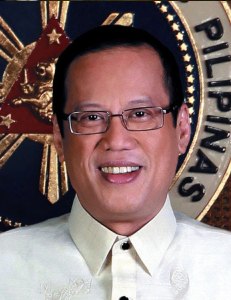
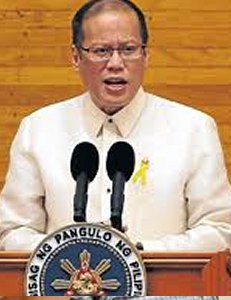
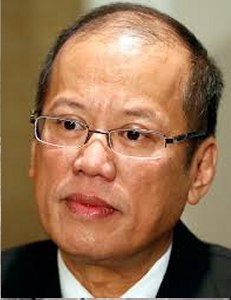
Rodrigo Duterte
| Date | Year | Cultural, natural, social and political events |
|---|---|---|
| - | 2016 | The new President is Rodrigo R. Duterte (PDP-Laban). The new Vice-President is Leni G. Robredo (Liberal) and head of the 17th Congress is Aquilino M. Pimentel III (PDP-Laban) |
| June 14 | 2016 | Robert Hall, the second Canadian taken hostage by the Abu Sayyaf in Samal Island, is beheaded on Jolo, Sulu.
The Supreme Court temporarily stops the Land Transportation Office (LTO) from issuing 700,000 license plates to motorists and from accepting more license plates from the Bureau of Customs. |
| June 30 | 2016 | Rodrigo Duterte is inaugurated as the 16th President of the Philippines with Leni Robredo being inaugurated as the 14th Vice President of the Philippines, marking the beginning of the Rodrigo Duterte administration |
| July 6 | 2016 | The PAGASA announces the end of the El Niño phenomenon. |
| July 12 | 2016 | The Philippines wins the arbitration case they filed at the Permanent Court of Arbitration regarding the legality of China's nine-dotted line claim over the South China Sea under the United Nations Convention on the Law of the Sea. |
| July 19 | 2016 | The Supreme Court acquits former President Gloria Macapagal Arroyo of her plunder case regarding the alleged misuse of funds for the Philippine Charity Sweepstakes Office (PSCO) |
| August 7 | 2016 | President Duterte publicly named more than 150 government officials including mayors, judges, polices and lawmakers who are allegedly involved in an illegal drug trade |
| August 25 | 2016 | President Rodrigo Duterte releases the matrix showing the supposed links of Sen. Leila de Lima and other former and current government officials to the alleged illegal drug operations inside the New Bilibid Prison |
| September 17 | 2016 | The Provincial Government of Batanes declares a state of calamity due to the damage wrought by Typhoon Ferdie. |
| November 18 | 2016 | Ferdinand Marcos is buried at the Heroes' Cemetery with rites closed to the general public. |
| January 30 | 2017 | Rodrigo Duterte ordered the cleansing of the Philippine National Police (PNP) after corruption was debunked at the wake of the kidnapping of the South Korean, Jee Ick-Joo |
| February 10 | 2017 | A 6.7 magnitude earthquake hit Surigao del Norte, killing at least 4 people. |
| February 24 | 2017 | Senator Leila de Lima was arrested for violations of Republic Act 9165, or the Comprehensive Dangerous Drugs Act of 2002, related to her alleged involvement in the New Bilibid Prison drug trafficking scandal. |
| March 18 | 2017 | Today we all are writing history. The story will go on month by month. |
